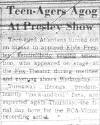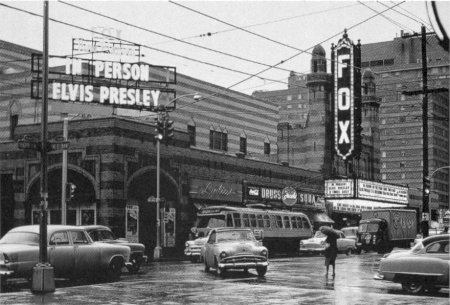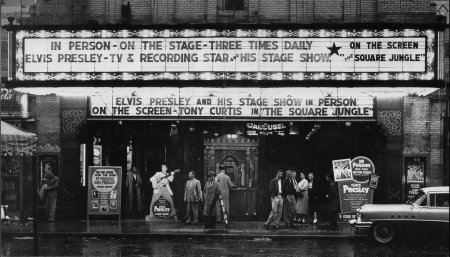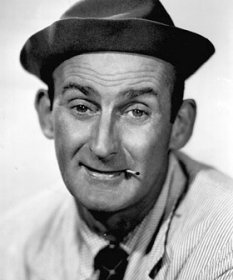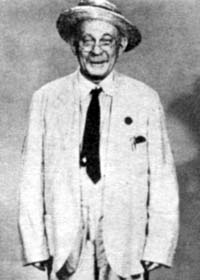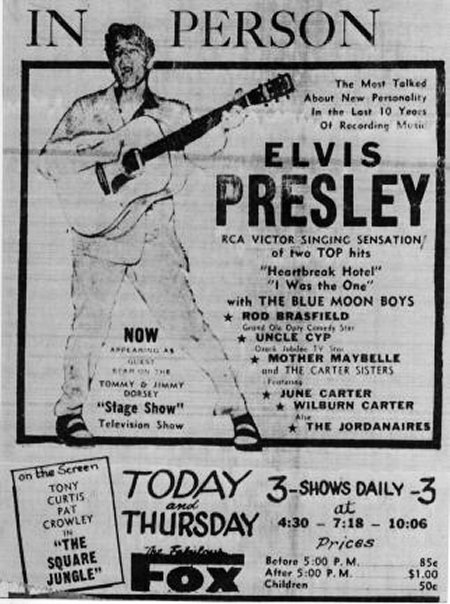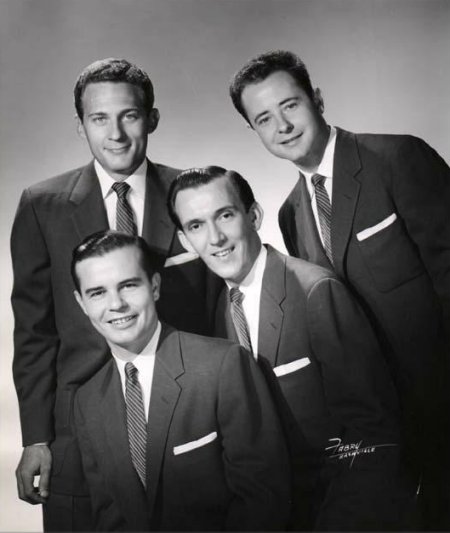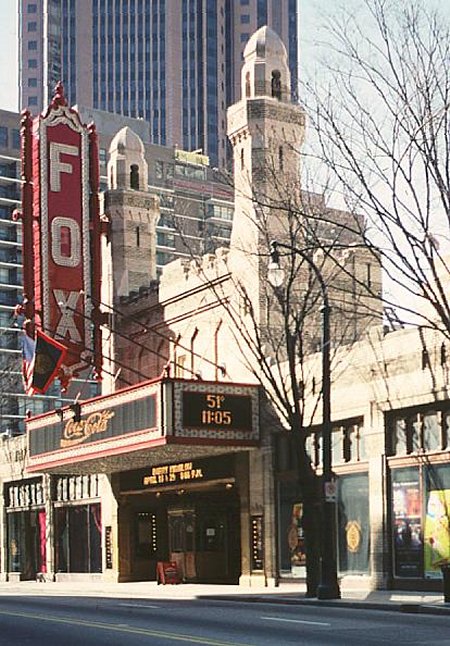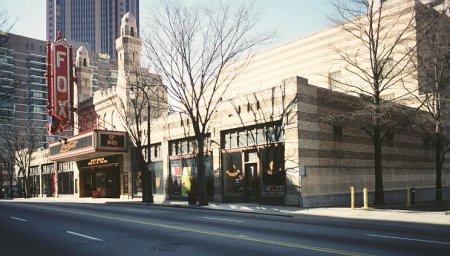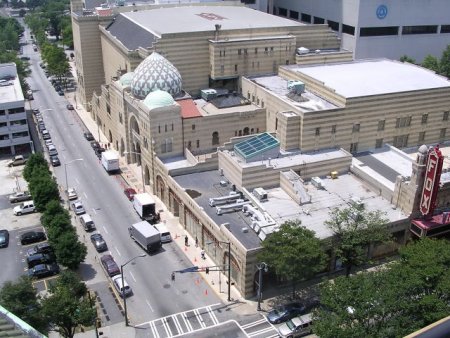 |
The Fabulous Fox - Atlanta, GA
Atlanta's Fox Theatre, originally the Yaarab Temple Shrine Mosque, was designed in 1927 by Olliver J. Vinour and P. Thornton Marye of the local architectural firm, Marye and Alger as headquarters for the 5,000-member Shriners organization.1 It was a beautifully outlandish, opulent, grandiose monument to the heady excesses of the pre-crash 1920's, a mosque-like structure complete with minarets, onion domes, and an interior decor which was even more lavish than its facade. 2Cost overruns threatened the Yaarab Temple mosque from the outset. To generate additional funding, the Shriners worked out a deal with movie mogul William Fox, who at that time was building movie "palaces" in Detroit, St. Louis, Brooklyn and San Francisco. He made this his Southeastern jewel with minor alterations in the original blueprints.2
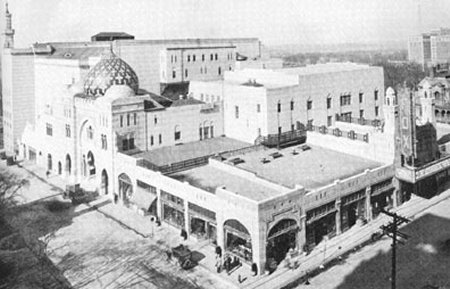 Opening Day at the Fox - Dec. 25, 1929 Photo courtesy Hal Doby Located at the intersection of Ponce DeLeon Avenue and Peachtree Street, Fox felt that Peachtree Street would be the more traveled road than Ponce DeLeon, so he asked that the main entranceway to the auditorium be moved from the Ponce DeLeon Avenue side of the building to the Peachtree Street facade. The Theatre opened on December 25, 1929 just 18 months after laying the cornerstone with a matinee that was followed by the grand opening premiere gala that evening. Admission prices ranged from 15 to 75 cents.1
Entering the huge auditorium, an early reviewer for the Atlanta Journal described "a picturesque and almost disturbing grandeur beyond imagination. Visitors encounter an indoor Arabian courtyard with a sky full of flickering stars and magically drifting clouds; a spectacular striped canopy overhanging the balcony; stage curtains depicting mosques and Moorish rulers in hand sewn sequins and rhinestones." 2
The interior was a masterpiece of trompe l'oeil; false beams, false balconies, false tents, ornate grillwork hiding air conditioning and heating ducts. Virtually every practical feature was disguised with artistic fantasy.2
Detailing and furnishing were equally ornate. Nothing - no space, no furniture, no hardware - escaped the gilt, the tile, the geometric design. Men's and Ladies' Lounges, broom closets, telephone booths were all emblazoned with intricate plaster, bronze and painted detail. Yet for all this seeming excess, The Fox retained a sense of tastefulness. As rich as it was in ornamentation, it never appeared overstated.2
The Fox opened as the Great Depression began. After 125 weeks of talking pictures and elaborate stage entertainment, it declared bankruptcy. Revived after temporary city ownership, it scraped by during the 1930's. In 1935 Arthur Lucas and William Jenkins, operators of regional theaters, form a partnership with Paramount Publix called Mosque Inc. They purchase the Fox for $725,000 and reposition it as a movie house. The theater gains firm footing for the first time since it opened.2
Because of the expense of converting 1,100 theatres to sound equipment and the economic crisis of the early 1930s, Fox's empire crumbled. He declared bankruptcy in 1936 and his interests in the Fox Theater Corporation and Fox Film Studios were sold. In 1939 the Georgia Theatre Company steps in to manage the facility. The banquet hall is renamed the Egyptian Ballroom and becomes the site of public functions, dances and social affairs.2
Like other Atlanta theaters, The Fox would at times be used to host feature premieres. The world premiere for Disney's Song of the South, based on the Uncle Remus stories by Georgia native Joel Chandler Harris, was held at the Fox on Nov. 12, 1946. The premiere itself was sponsored jointly by the Atlanta Junior League and the Uncle Remus Memorial Association. Celestine Sibley, who covered the event for the Atlanta Constitution, called it "D Day" in honor of Disney. Not since Gone With the Wind had all of Atlanta turned out for a Hollywood movie.3
Photo by Lane Brothers Commercial Photographers Photographic Collection courtesy Pullen Library Georgia State University On the night of the gala, Disney took the stage at the Fox and welcomed the sellout audience of 5,000 in the voice of Mickey Mouse with a Southern accent: "How are you-all?" However, the celebration and good feelings were overshadowed by a dark secret. Song of the South's African-American cast members were not able to join Walt Disney and the white cast members at the movie's premiere in Atlanta because Atlanta was a segregated city. African-Americans could not enter the movie theater or any other public buildings downtown.3
Photo by Lane Brothers Commercial Photographers Photographic Collection
Under strong management the Fox prospered as one of Atlanta's finest movie houses from the 1940's through the 1960's. Occasional live entertainment by name artists and the Metropolitan Opera Company's 20-year annual spring performances brought The Fox some of its greatest moments of glory.2
Peter Guralnick and Ernst Jorgensen in Elvis Day by Day wrote, "Elvis arrives at the theater for an 11:30 a.m. dress rehearsal for shows that alternate with scheduled screenings of The Square Jungle, with Tony Curtis. He is paid $1831.54, representing 50 percent of the net proceeds for the two-day engagement." Appearing on the bill with them were Rod Brasfield, Uncle Cyp, Mother Maybelle and the Carter Sisters featuring June Carter, and the Wilburn Brothers.
A blurb in the March 15th edition of the
Atlanta Journal-Constitution read:
From 1947 to 1958, Rodney Leon Brasfield was the premier comedian at the Grand Ole Opry and very likely in country music. He began his career as straight man for his brother, Lawrence Lemarr Brasfield (known as “Boob”), during several years with Bisbee’s Dramatic Shows, one of many such troupes that traversed the South during the late 1800s and early 1900s. Lawrence eventually wound up performing as “Uncle Cyp” along with his wife as "Aunt Sap" on Springfield, Missouri’s Ozark Jubilee television program which ran from 1955 to1960.4
Audiences instinctively sympathized with Rod Brasfield’s hapless character, a good ole country boy who was constantly unlucky. Like Minnie Pearl, with whom he frequently teamed from 1948 until his death, he often poked fun at country life--always with good humor. Reinforcing his small-town identity, he took his moniker, The Hohenwald Flash, from the name of a Tennessee town southwest of Nashville. Brasfield and Pearl’s comic exchanges were not only broadcast on the Opry radio show, but also televised on a series of ABC network shows made by Opry acts in 1955 and 1956. In addition, Brasfield did comedy routines with singer-comedienne June Carter.4
The March 14th advertisement had the Jordanaires added to the bill and mistakenly referred to the Wilburn Brothers as Wilburn Carter. The Jordanaires, though sharing the bill, are not believed to have actually performed backup for Elvis at these shows. Elvis first met them touring and performing backup with Eddie Arnold, at Ellis Auditorium in 1954 in Memphis. At the time he expressed his desire to have them sing backup with him if he ever started making it big performing. He would request them the following month, April of 56, for his next recording session at RCA in Nashville but Chet Atkins would only use Gordon Stoker. He would not record with the full group until the following July in New York.
The time of the movie palace finally ran out around 1973. Television, suburban flight and a changing movie industry took patrons elsewhere. Film distributors required month-long commitments for first-run films. While this was easy for suburban theaters holding only 500 seats or so, it presented a problem for the massive Fox. With almost 4,000 seats, it could complete a run in less than a week. The Fox was reduced to showing second-run movies to dwindling audiences.2
The Fox faced yet another threat: the relentless growth of metropolitan Atlanta. Almost sold and demolished to make way for Southern Bell's headquarters, it was rescued through the efforts of Atlanta Landmarks, Inc., a non-profit organization of interested, energetic and committed Atlantans. Their four-year "Save The Fox" fundraising campaign opened the hearts and purse strings of individuals and corporate donors.2 Under Atlanta Landmarks' ownership, The Fox was once again put on a sound financial footing as a multi-purpose performing arts center. In 1976, documents were submitted qualifying The Fox to be designated a National Historic Landmark.2
Photo © 2006 Tobey Sanford
To date, more than $20 million has been spent in the restoration
project. The Fox boasts its own in house Restoration Staff made up of
highly skilled artisans directed by an expert in Historic Preservation.
The Restoration Staff is fully engaged in restoring and preserving the
significant architectural features of the Fox in an authentic manner,
including the decorative surfaces, the masonry and cast stone exterior,
the furniture collection, and the archive of artifacts and
documentation.2
The Fox has generated an operating surplus every year since Landmarks took over in 1975. It may be the only independent, non-profit civic auditorium in the country which can sustain its own operations financially. At present some 325 nights a year are booked in the auditorium while the Egyptian Ballroom and Grand Salon are rented regularly for corporate events, video and film shoots, political events, press conferences, sports presentations, proms, weddings, and a wide variety of special occasions.2
The Fox has generated millions of dollars for the Atlanta economy. An impressive range of events continues to attract nearly three-quarters of a million visitors a year, from Atlanta area residents to tourists to international dignitaries. The Fox stands today as a fiercely protected landmark and a nationally acclaimed theater; having survived depression, mortgage foreclosure, bankruptcy, competition, television, real estate development, and above all, age.2
The Fox is an impeccably intact and aggressively preserved Landmark that has been designated a National Historic Landmark (the highest national ranking), listed on the National Register of Historic Places. The Fox is also a Georgia Museum Building (the most prestigious statewide ranking).2 page added May 2, 2008
1
according to
The Atlanta Fox Theater by Hal Doby all advertisements and articles not directly credited are courtesy Doug McCown of the Ivan Allen Jr. Reference Dept. of the Atlanta-Fulton Public Library
|
|
All photos on this site (that we didn't borrow) unless otherwise indicated are the property of either Scotty Moore or James V. Roy and unauthorized use or reproduction is prohibited. |
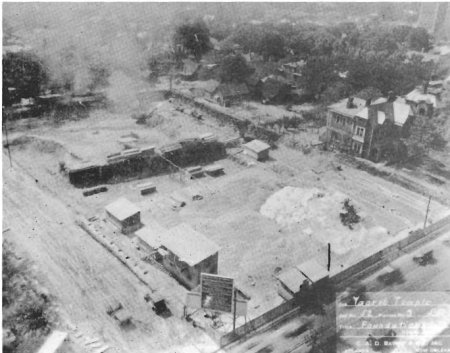
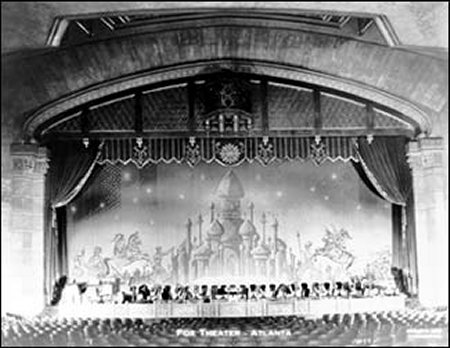
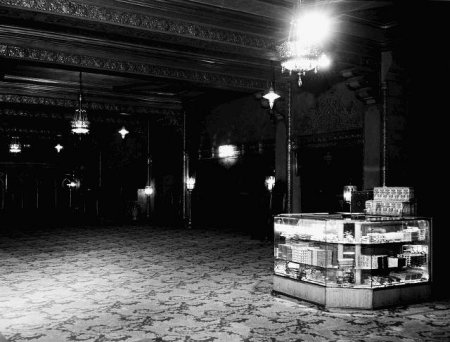
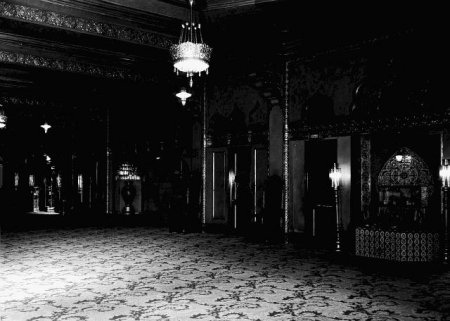
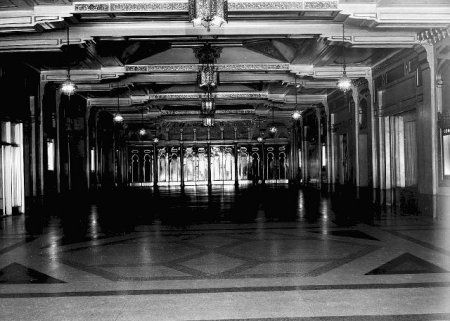
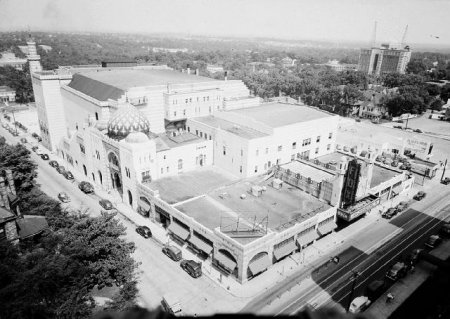

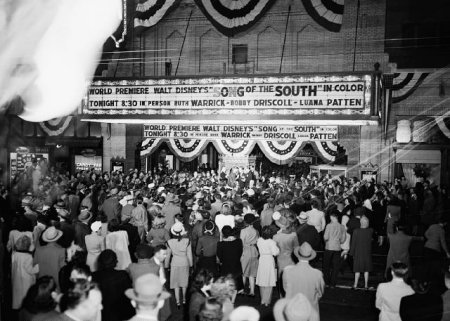
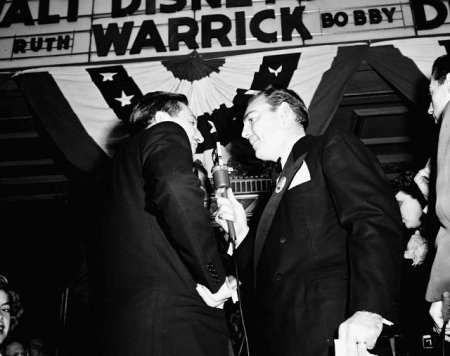
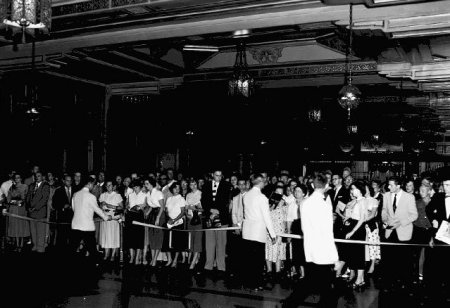
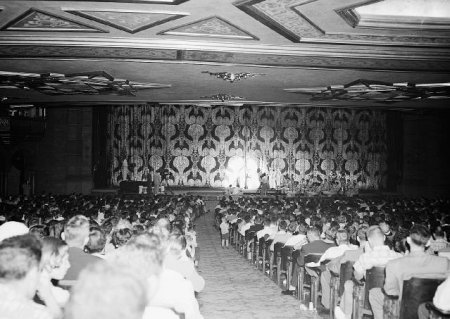
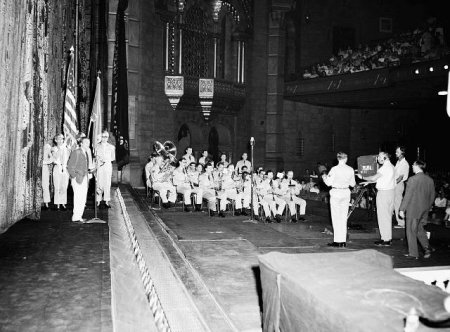
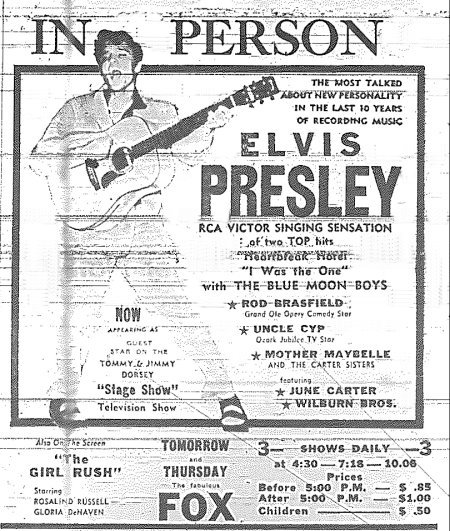
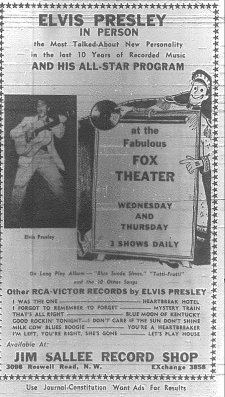 On March 14th and 15th, 1956, Elvis, Scotty, Bill and DJ
performed three shows each day at the Fox. They had by then appeared on
National Television four times on
On March 14th and 15th, 1956, Elvis, Scotty, Bill and DJ
performed three shows each day at the Fox. They had by then appeared on
National Television four times on 